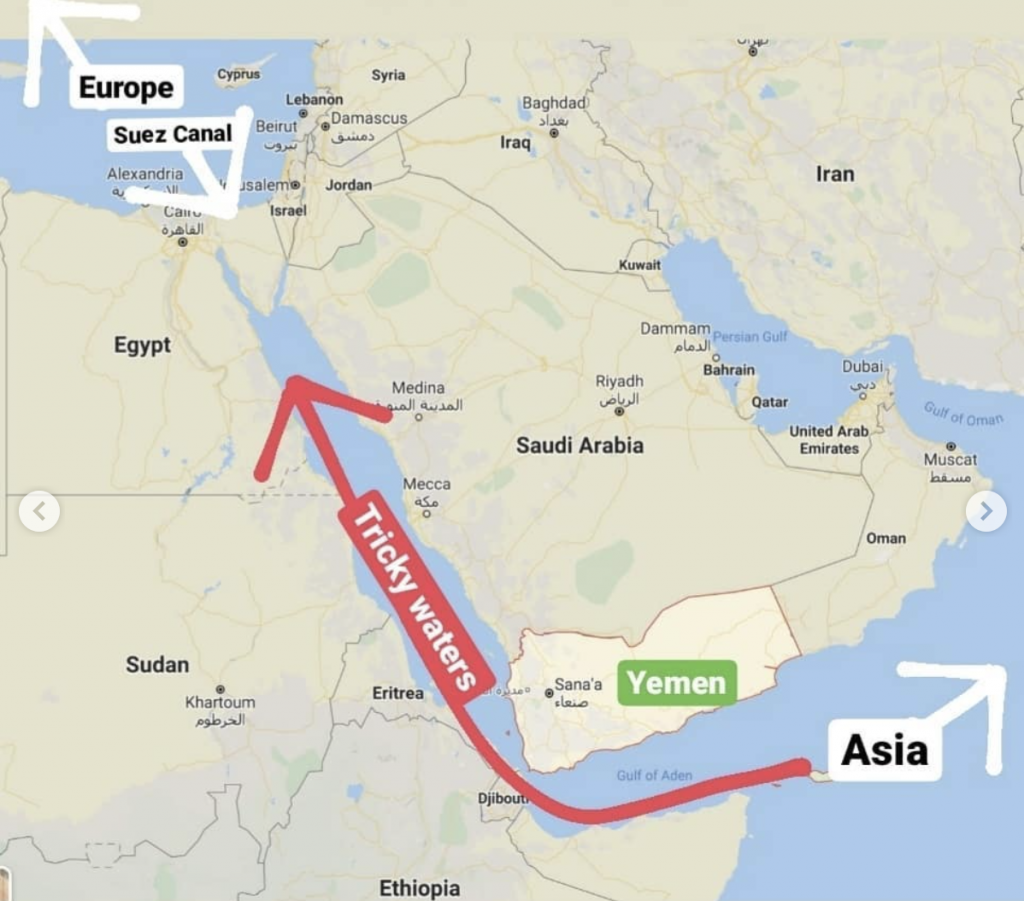Yemen is facing the world’s worst humanitarian crisis. According to UNICEF, 80% of the population are in need of humanitarian aid. The country is in a state of ‘catastrophic’ famine – Yemenis are literally starving, with more than 2 million children suffering acute malnourishment. It’s clear the global community needs to help – but do you know why there is a humanitarian crisis in Yemen?
The history of war and politics in the country is complicated, to say the least. But understanding these causes is crucial to grasping the extent of the crisis… and why humanitarian aid is helpful in some ways and inadequate in others. Making donations to humanitarian efforts is important, but the devastation will not be fixed at the root cause by donations alone.
While this Explainer is simplified, it’s a start. As always, the more you read and research global issues the more informed you’ll be – and better able to help.
The Geographical Context
It may seem cruelly simplistic, but geography is an important factor in why there is a humanitarian crisis in Yemen.
The Suez Canal is a shipping route that runs between the Middle East and Africa. Yemen and Saudi Arabia are the only two Middle Eastern countries with coastlines leading into the canal. Egypt, Sudan and Somalia sit on the opposite coastline.

The Suez Canal is the quickest shipping route from Asia through to Europe – if you don’t travel through the Suez, you have to go all the way around Africa, which takes much longer. So the more control a country has over these waters, the greater control and influence they have over the global shipping trade.
These are very contested waters, with many countries struggling to exert power.
The Religious Context
There is a religious divide within Yemen, with two branches of Islam – Shia Islam and Sunni Islam. Sunni Muslims are the majority, Shia Muslims are the minority. The clashes between these two groups in general stretch back centuries.
Religious division is not the only, nor the most important, contributor to the wars that caused Yemen’s humanitarian crisis. But it is relevant context to understanding the country and broader region.
Related Posts
2011 Arab Spring Uprising
There has been war and conflict in Yemen for a very long time. But for the purposes of this article, we’ll start with one specific trigger: the 2011 Arab Spring Uprising.
In the 2011 uprising the people of Yemen ousted their authoritarian President, Ali Abdullah Saleh. This left the country in the hands of the weaker deputy, Abdrabbuh Mansour Hadi. Already unstable, this leaves Yemen in even worse shape than before.
A rebel group called the Houthis (who are Shia Muslims) have been fighting against the government for a long time. They seize the opportunity to start taking over different areas of the country in the midst of the Presidential turmoil.
Saudi Arabia and Iran Involvement
By 2015, the Houthi rebels have driven the new President Hadi out of Yemen and have taken over the capital, Sanaa.
Saudi Arabia believes the Houthis are being funded by Iran, in an attempt to take control of Yemen and increase Iranian economic and political (and by extension Shia Muslim) power in the region.
Remember: Yemen has that highly influential spot on the coast to the Suez Canal, sitting right next to Saudi Arabia. The more coast you have, the more power you have. If Saudi Arabia bolsters (or controls) Yemen, it maintains its position as the biggest Middle Eastern player along the Suez. However, if Iran takes Yemen via the Houthi rebels, they will be able to challenge Saudi Arabia’s dominance.
So Saudi Arabia launches air strikes against the Houthis. Their goal was to push ‘Iranian influence’ out of Yemen and re-instate the government – it was on this basis that other countries, including the U.S., supported and aided Saudi Arabia’s actions.
The campaign was meant to take weeks… but in 2020 the civil war in Yemen, which is in reality a proxy war between Saudi Arabia and Iran (and others) is still going.
This Is Why There is a Humanitarian Crisis in Yemen
10 years of conflict, five years of war, plus two horrendous health crises (first cholera, now COVID-19) have crippled the Yemeni economy and people. For a quick snapshot of how little money there is:
Yemen GDP Per Capita: USD$968
Australia GDP Per Capita: USD$57,395
*2018 Data from World Bank
Yemen’s biggest export is oil, but the ongoing conflict and the falling price of oil has limited the country’s ability to generate revenue. Without their own stable government and money, there is little hope to provide health care, fix infrastructure damaged by the war, stop rising unemployment, or help offset the high cost of food.
And all of that is why Yemen is in crisis – this is why you are seeing pictures of starving Yemeni children on your social feeds.
How Can You Help?
The U.N’s Office for the Coordination of Humanitarian Affairs estimates Yemen needs $3.4 billion in humanitarian aid. By October 2020, only 42% of funding had been raised as many countries are also facing their own economic struggles due to the coronavirus pandemic.
Individual donations will not solve this problem entirely, but it will help. Consider making a donation to:
UN Humanitarian Fund for Yemen
UNICEF Children in Yemen appeal
International Rescue Committee Winter appeal, which is currently tripling all donations made for a limited time
UN World Food Program
Médecins Sans Frontières (Doctors Without Borders)
Baitulmaal Winter appeal
Mona, a relief organisation on the ground in Yemen
Main image: UN Office for the Coordination of Humanitarian Aid
Did you find this article helpful? If you love what we do, please consider supporting us by purchasing a copy of our book How to Win Every Argument. Prices from $9.99













Comments are closed.